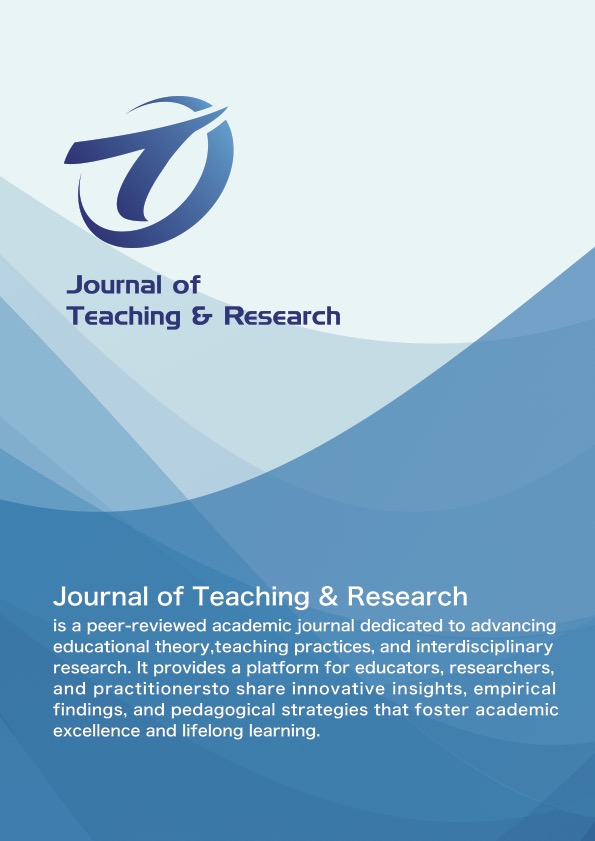Application and Effect Evaluation of Flipped Classroom in Management Communication Teaching
DOI:
https://doi.org/10.65170/jtr.v1i1.6Keywords:
Flipped classroom; Management communication; Reform in education; Effect evaluation; Higher educationAbstract
Based on the concept of flipped classroom, this study constructed and implemented a teaching mode of "pre class knowledge input - deep classroom interaction - post class reflection and consolidation" in the undergraduate course of "Management Communication", and evaluated its application effect through a quasi experimental design. Two parallel classes of students from a comprehensive university were selected as the subjects, with the experimental class using flipped classroom and the control class using traditional teaching methods. The study analyzed from three dimensions: learning effectiveness, learning attitude and satisfaction, and teacher teaching effectiveness through multiple methods such as questionnaire surveys, classroom observations, and semi-structured interviews. The results showed that flipped classroom significantly improved students' knowledge mastery, communication skills, and classroom participation. Students generally held a positive attitude towards classroom interaction and self-directed learning experience, and teachers' classroom design and management abilities also improved. At the same time, this study points out the problems faced by flipped classroom in implementation, such as differences in pre class learning engagement, complexity of classroom management, and insufficient reliability of evaluation criteria, and proposes corresponding improvement suggestions. The research results provide empirical support and reference paths for the teaching reform of management communication courses and other skill based courses.
References
1. Bakokonyane, K., & Pansiri, N. O. (2024). Exploring item estimators’ parameter and Bloom’s taxonomy for marking and grading assignments in higher education institutions: A case of Botswana. Mosenodi: International Journal of the Educational Studies, 27(2), 44–59.
2. Baig, M. I., & Yadegaridehkordi, E. (2023). Flipped classroom in higher education: a systematic literature review and research challenges. International Journal of Educational Technology in Higher Education, 20(1), 61. DOI: https://doi.org/10.1186/s41239-023-00430-5
3. Bergmann J, Sams A. (2014). Flipping for mastery. Educational Leadership, 71(4): 24-29.
4. Bishop, J. L., & Verleger, M. A. (2013). The Flipped Classroom: A Survey of the Research. ASEE National Conference Proceedings, 23.1200.1-18. DOI: https://doi.org/10.18260/1-2--22585
5. Galindo-Domínguez, H., & Bezanilla, M.-J. (2025). A Critical Systematic Review of the Impact of the Flipped Classroom Methodology on University Students’ Autonomy. Trends in Higher Education, 4(2), 22. DOI: https://doi.org/10.3390/higheredu4020022
6. Jang, H. Y., & Kim, H. J. (2020). A Meta-Analysis of the Cognitive, Affective, and Interpersonal Outcomes of Flipped Classrooms in Higher Education. Education Sciences, 10(4), 115. DOI: https://doi.org/10.3390/educsci10040115
7. Lage, M. J., Platt, G. J., & Treglia, M. (2000). Inverting the Classroom: A Gateway to Creating an Inclusive Learning Environment. The Journal of Economic Education, 31(1), 30–43. DOI: https://doi.org/10.1080/00220480009596759
8. Naing, C., Whittaker, M. A., Aung, H. H., Chellappan, D. K., & Riegelman, A. (2023). The effects of flipped classrooms to improve learning outcomes in undergraduate health professional education: a systematic review. Campbell systematic reviews, 19(3), 1339. DOI: https://doi.org/10.1002/cl2.1339
9. Pérez, A., Collado, J., Herrero, Á., & San Martín, H. (2019). An Empirical Exploration of the Perceived Effectiveness of a'Flipped Classroom'in a Business Communication Course. Journal of the Scholarship of Teaching and Learning, 19(2), 47-65. DOI: https://doi.org/10.14434/josotl.v19i1.22842
10. Santaria, R., Junaid, R., & Thaba, A. (2023). Evaluating the Classroom Interactions and Knowing the Implications for Students' Reading Abilities. Eurasian Journal of Applied Linguistics, 9(1), 123-134.
11. Stein, K. N. (2016). Developing and Implementing a Flipped Classroom for Business Communication. The Journal for Research and Practice in College Teaching, 1(1),1-5.
12. Wang, G. (2025). Effects of a Flipped Classroom College Business Course on Students’ Pre-Class Preparation, In-Class Participation, Learning, and Skills Development. Administrative Sciences, 15(8), 301. DOI: https://doi.org/10.3390/admsci15080301
Downloads
Published
How to Cite
Issue
Section
License
Copyright (c) 2025 Rong Li

This work is licensed under a Creative Commons Attribution 4.0 International License.








